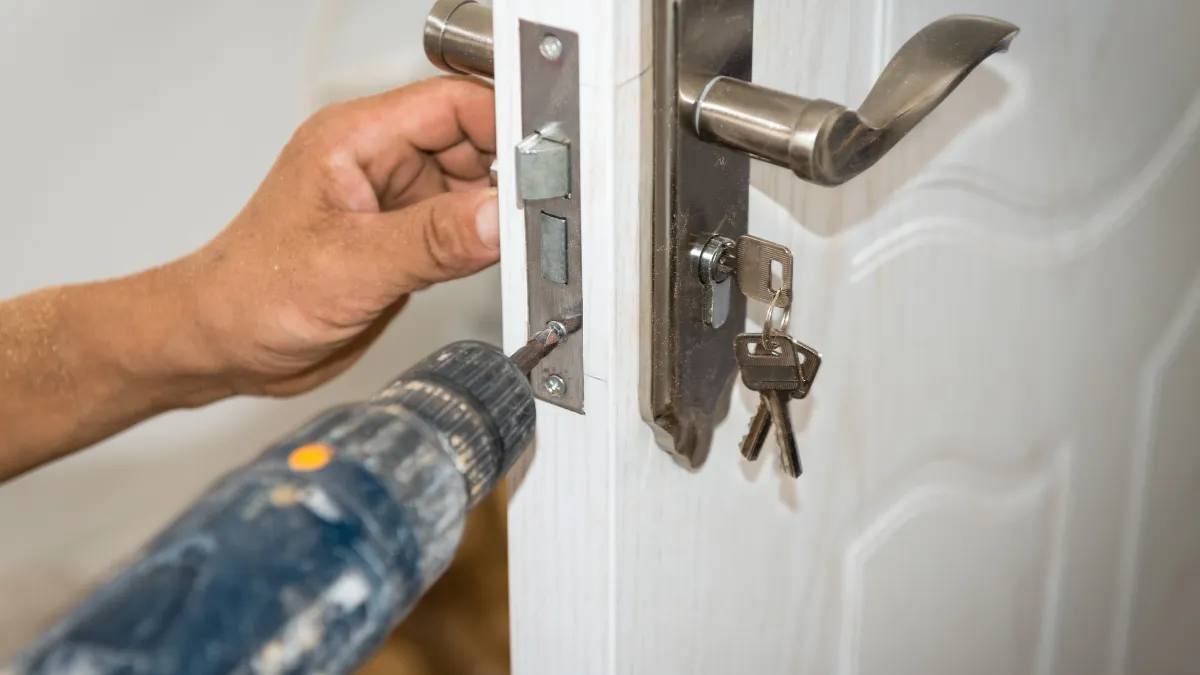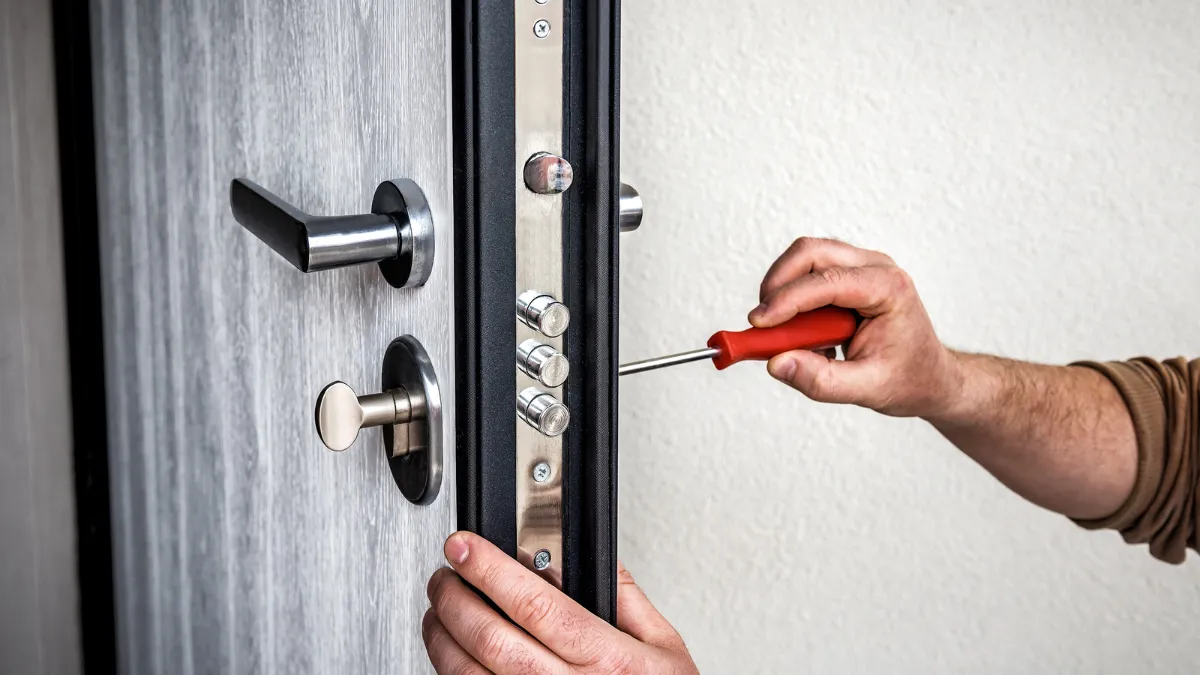During a home inspection, one area that often reveals several issues is the doors.
While doors may seem like a minor part of a property, they play a significant role in the security, insulation, and overall functionality of a home.
If door defects go unnoticed, they can lead to problems such as improper closing, compromised security, and even structural damage.
In this blog, we will discuss the top 5 door defects commonly detected during a home inspection, and explain how addressing these issues can save you from costly repairs down the road.
Smaller Door Size Causing Improper Closing
One of the most common issues detected during home inspections is doors that are improperly sized.
When a door is too small for its frame, it leads to improper closing.
This issue might not seem significant at first, but over time, it can cause more problems, such as difficulty latching the door securely or even drafts that affect the energy efficiency of your home.
Why It Happens:
Improper door size can be due to poor measurements during the initial installation or a result of natural settling of the house over time, which causes door frames to shift.
Sometimes, in older homes, doors were replaced or adjusted without paying attention to proper sizing.
Why It’s a Problem:
A door that doesn’t close properly leaves gaps that allow air, dust, and insects to enter the home.
This reduces the efficiency of heating and cooling systems, increasing your energy bills.
Additionally, it compromises the security of the house, as a door that doesn’t close properly is easier to force open.
How a Home Inspection Helps:
During a home inspection, professionals check the fit of every door to ensure it closes properly without resistance.
They also inspect the surrounding frames to detect any settling or shifting that might affect the door’s functionality.
This allows homeowners to address improper door sizes before they lead to more severe issues.
Stains and Cracks on Doors
Stains and cracks are visible defects often noticed during home inspections.
While stains may seem purely cosmetic, they can indicate underlying problems such as water damage or poor-quality materials.
Why It Happens:
Stains can occur due to moisture exposure, especially in areas prone to high humidity or near windows where condensation builds up.
Cracks may form due to temperature fluctuations, material aging, or low-quality construction materials.
Why It’s a Problem:
Stains and cracks may lead to long-term damage if ignored.
For instance, moisture buildup behind the stains can cause mold growth, which poses health risks and weakens the door’s structure over time.
Cracks can further widen, making the door fragile and more susceptible to breaking or splitting.
How a Home Inspection Helps:
Home inspectors closely examine doors for any signs of stains or cracks.
They also assess whether these issues are cosmetic or indicate deeper problems like water intrusion.
If necessary, they will recommend repairs or replacement to prevent further damage.
Door Locks and Tower Bolts Not Working
Another crucial issue that home inspections often uncover is non-functional door locks and tower bolts.
Locks and bolts are essential for the security of your home, and any malfunction can compromise your safety.
Why It Happens:
Locks and tower bolts may stop working due to wear and tear, rust, or improper installation.
Over time, debris can accumulate inside the mechanisms, causing them to jam or malfunction.
In some cases, outdated locks or bolts simply fail due to age or lack of maintenance.
Why It’s a Problem:
Faulty locks and bolts are a significant security risk.
Doors that do not lock properly can be easily forced open, leaving your home vulnerable to intrusions.
Additionally, non-functional locks can lead to frustration during daily use, especially for frequently accessed doors.
How a Home Inspection Helps:
Home inspectors test every lock and bolt to ensure they are working smoothly and provide adequate security.
They will check for any signs of wear, rust, or misalignment that could impact the lock’s performance.
By identifying faulty locks or bolts early, you can replace them and ensure the security of your home.
Missing Screws in Hinges Causing Door Bending
Sometimes, door hinges are missing screws or are installed with the wrong screws, causing the door to bend or sag over time.
This issue can result in doors that don’t open or close properly and put additional strain on the door frame.
Why It Happens:
Missing or improperly installed screws are often due to rushed or poor installation.
In some cases, homeowners may replace hinges themselves without using the correct screws, leading to the door misaligning over time.
Why It’s a Problem:
When screws are missing, the door will eventually start to bend or sag under its own weight.
This causes uneven pressure on the door frame, leading to issues like the door scraping the floor or getting stuck when you try to open or close it.
Additionally, a bending door can cause further damage to the surrounding frame or walls, resulting in costly repairs.
How a Home Inspection Helps:
During an inspection, professionals examine the condition of the door hinges, checking for missing or loose screws.
They will ensure that the hinges are properly secured and aligned, preventing future damage.
If any screws are missing, they will recommend immediate replacement to avoid further problems.
Stains on Hardware and Screws
Stains on door hardware and screws are more than just an aesthetic issue; they can indicate corrosion or poor maintenance of the door’s components.
Why It Happens:
Hardware like screws, handles, and hinges can accumulate stains due to moisture exposure, rust, or oxidation.
This is particularly common in homes located in humid environments or in older homes where the hardware has not been properly maintained.
Why It’s a Problem:
Stains on hardware can weaken the components over time, leading to malfunctioning parts or screws that break or fall out.
Rusty screws can cause the door to become unstable, while corroded hinges or handles may stop functioning altogether.
How a Home Inspection Helps:
Home inspectors check all hardware for signs of stains, rust, or corrosion.
They assess whether the stains are surface-level or indicate deeper issues like rusted hardware that needs replacement.
By addressing stained hardware early, you can replace any compromised components and prevent door malfunctions down the road.
Conclusion
Doors may seem like a small detail during a home inspection, but they are an essential part of any home’s functionality and security.
Issues like improper door sizing, stains, faulty locks, missing screws, and corroded hardware can lead to long-term problems if left unaddressed.
A thorough home inspection helps identify these common door defects early, allowing homeowners to take corrective action before the issues escalate.
By ensuring that your doors are in good condition, you improve your home’s energy efficiency, security, and overall value.
Before starting any renovation or moving into a new home, make sure you have a professional inspect your doors and address any issues that could affect your home’s safety and comfort.
<p>The post Top 5 Door Defects Commonly Detected During Home Inspection first appeared on Real Estate Research Blog - Creative PropTech.</p>







